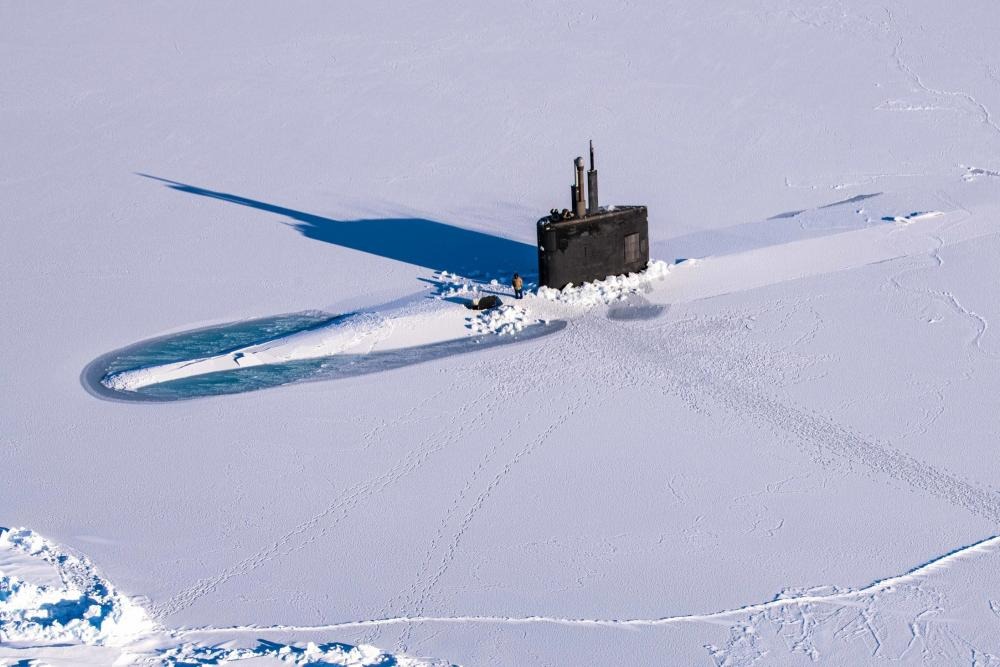
*****
WASHINGTON — Senior U.S. Navy leaders in the Atlantic and European regions discussed, in some detail, the nature of the Russian build-up and naval activity in the Arctic region during a recent seminar in Washington.
Speaking Feb. 9 at a seminar sponsored by the Wilson Center’s Polar Institute and the Center for Maritime Strategy (CMS), a think tank of the Navy League of the United States — Deterring Russia at Sea in the High North — were Adm. Daryl Caudle, commander, U.S. Fleet Forces Command and Vice Adm. Dan Dwyer, commander, U.S. Second Fleet. The seminar was moderated by retired Adm. James Foggo, dean of CMS.
“Russia now has six bases, 14 airfields, 16 deep-water ports, and 14 icebreakers built,” Caudle said of the Russian build-up.
“They dominate the Arctic geography and possess the corresponding ability to dominate in capability and infrastructure,” he said. “They do have legitimate sovereign interests and have elevated their Northern Fleet to constitute its own military district — think, combatant command.”
For decades, Russia and its prior Soviet Union entity have been especially protective of the northern approaches of the Barents Sea and Artic Ocean out of a desire to maintain a protective bastion for its nuclear-tipped missile force deployed on its ballistic-missile submarines.
Caudle said Russia has the largest icebreaker fleet in the world and has even armed icebreakers with the Kalibr cruise missile.
“They have an active defense system that has high readiness, mobility, and firepower in the Northern Fleet,” he said. “They centralize the command-and-control authority of the S-400 [surface-to-air] missile system. They have strong anti-access and access-denial capability that reaches from the Arctic to the Baltic to the GIUK [Greenland-Iceland-United Kingdom] Gap. They have long-range, precision-guided strike weapons especially focused in and near the Kola Peninsula.”
Caudle said those weapons include submarine-launched Kalibr submarine-launched land-attack cruise missiles, the Kinzhal long-range anti-ship missile, and the Screwdriver mobile land-attack cruise missile.
Arctic Upgraded as Russian Priority
Dwyer, whose fleet had increased its excursions into the High North, said “[t]he stability that we enjoyed in the High North is in fact being challenged not only by climate change but by Russia themselves.
He said that in July 2022 Russia released its new maritime doctrine, “prioritizing the Arctic as its most important maritime direction, pledging to protect these waters ‘by all means.’ This includes increasing attention on the Arctic littorals as well as the introduction of new missile capabilities … to focus on its bastion of the Northern Fleet…. Prior to this announcement, the Arctic was their number three priority. The Atlantic was their number one priority. Now Russians realize that the Arctic is the key to their economy and to their defense as they see the receding of the Arctic ice cap.”
Dwyer also noted that in August 2022, Russia, “unveiled plans for a new strategic missile-carrying submarine cruiser for Atlantic operations. Moreover, in September Russia conducted Exercise Inka in the Arctic, deploying several submarines together, showing their capability in the High North. It is worth noting that Russia has renovated many Arctic sites and opened new ones. This is why we at JFC [NATO’s Joint Forces Command] Norfolk do everything in our power to manage and mitigate risk, prevent escalation, and ensure transparency of NATO operations in the Arctic.”
- Insitu Going Strong at 30, Focusing on Maritime Operations - April 8, 2024
- Navy Awards Boeing Additional Funds for MQ-25 Drones for Testing - April 3, 2024
- Benign 4th Fleet AOR Useful for Unmanned Vehicle Operationalization, Admiral Says - March 27, 2024






